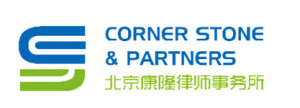You may think that only trademarks that are unused can be successfully cancelled, but in the author’s experience about 70% of non-use cancellations can succeed, including many trademarks that are in actual use. There are three main successful cases:

Partner
Corner Stone & Partners
- The trademark has not been used for more than three consecutive years;
- After changing their addresses or attorneys, many trademark owners do not timely record these changes with the trademark office. Consequently, they have failed to receive the notice from the trademark office and/or missed the deadline to file a response; and
- Some trademark owners do not properly retain the evidence of trademark use. Despite their actual use of the trademarks, they are unable to submit sufficient/valid evidence to prove it, causing the trademarks to be eventually cancelled.
Need for non-use cancellation
A non-use cancellation is usually recommended in the following cases:
- If there are others’ prior trademarks blocking a trademark application, which has been registered for more than three years, the applicants can try to have the obstacles cancelled with non-use cancellations;
- When trying to file an invalidation against a bad-faith registration without overwhelming evidence to ensure the success of the invalidation, it is recommended to file a non-use cancellation in parallel with the invalidation request. Since many trademark squatters register a large number of trademarks just for hoarding, even though there may not be sufficient evidence to prove the other party’s bad faith and/or the trademark’s fame/popularity, the opposite party’s trademark may be easily cancelled for being in non-use; and
- According to trademark law, when a trademark has been registered for more than five years, it can no longer be invalidated unless it can be proved that the opposite party has bad faith, and the trademark is well known. Therefore, if the other party’s trademark has been registered for more than five years, and there is insufficient evidence to prove the opposite party’s bad faith, and the well-known status of our trademark, a non-use cancellation may be the only feasible solution.
Complete v partial cancellation
When submitting a non-use cancellation request, you may choose to request to cancel all of the goods, or only a part of the goods. According to current practice, when you choose to cancel all the goods covered by the trademark, as long as the trademark owner submits evidence of use on at least one of the goods, the trademark registration can be maintained valid with respect to all the goods.
However, when the non-use cancellation request is against a part of the goods, the trademark owner has to submit evidence of use with respect to each item of the goods, respectively. Only those items for which evidence of use is submitted may be maintained, and the others will be cancelled.
Therefore, if the purpose of the non-use cancellation is to remove obstacles that block your trademark registration, and the scope of goods only partially conflict with each other, it is recommended to file the non-use cancellation only against the conflicting goods, which may improve the chance of success in removing obstacles.
Responding to non-use cancellation
- Complete cancellation. As long as the evidence of trademark use on at least one item can be provided, the entire trademark registration is likely to be maintained in whole.
- Partial cancellation. It is recommended to provide evidence of trademark use on as many items as possible.
If your trademark has not yet been put into commercial use, it is still recommended to actively reply, and not give up easily. It is suggested to submit, for example, product manuals, blueprints, designer’s pictures, promotional slides or evidence of trademark use in other classes.
Since the examination of a non-use cancellation is not very thorough, and the evidence will not be sent to the other party for cross-examination, some insufficient evidence of use may still be accepted by the examiner.
Conclusion
When you intend to cancel others’ trademarks, no matter whether it is to remove obstacles that block your applications, or to cancel bad-faith registrations, and regardless of whether the trademark is in actual use, it is advisable to actively try with non-use cancellations in any case.
When your trademark is being cancelled by others, even if your trademark is not in actual use, it is still recommended to actively reply to the cancellation and submit whatever evidence you may have so there can be a good chance of maintaining your trademark.
Nick Ji is a partner and trademark & patent attorney at Corner Stone & Partners
Corner Stone & Partners
1905, Tower B, Tian Yuan Gang Centre,
No. 2 Dongsanhuan North Road, Chaoyang District,
Beijing 100027, China
www.cornerstoneip.com.cn
Contact details:
Tel: +86 10 8446 4600 (ext. 807)
Email: nick.ji@cornerstoneip.com.cn





























